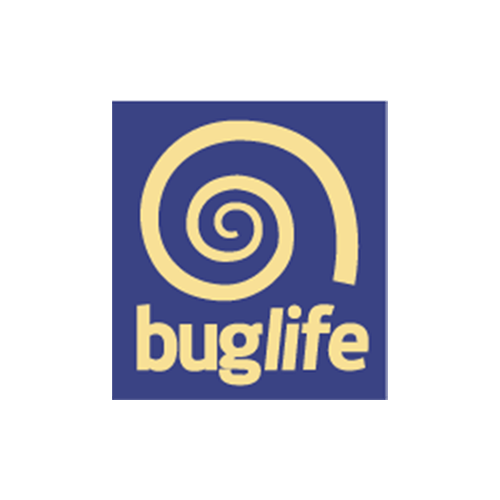Rygor Group supported the planting of 5 hectares of wildflowers in the UK in 2023-24, including working in local primary schools
Rygor Group has taken action to restore wildflower meadows, one of the rarest habitats in the UK that is essential for the protection and survival of insects.
Wildflower meadows provide insects with food, shelter and transport links across countries in the UK where biodiversity has been depleted by habitat loss, development and intensive farming. World leading study, State of Nature confirms the UK as one of the world’s most nature depleted countries, with 1 in 6 of more than 10,000 species assessed (16%) at risk of being lost from Great Britain.
Pollinators are critical to food chains and as such, wildlfower meadows provide valuable support for wildlife and all life on earth, including humans. In the words of Kew Gardens, ’The more wildflowers there are, the more diverse pollinators they can support, and the more healthy crops we can grow.’
Our solution is to restore B-Lines - a network of insect pathways along which we are restoring and creating wildflower rich habitat. These insect super highways created in partnership with GreenTheUK and Buglife will extend across the whole of the UK, allowing wildlife to move freely through our countryside and towns. Thanks to support from Rygor Group, a network of flower-rich pathways that benefits pollinators, other wildlife, and people has been created.
Rygor Group has supported the planting of 5 hectares of wildflowers in local areas, including local schools (view schools case study here).

Wildflower Restoration in Camgate (2.6 hectares)
Rygor Group supported the restoration of 1 hectare of wildflowers at Stockley Park. Stockley Park is a 4.5 hectares Industrial Estate, with a dedicated management team that has demonstrated commitment to biodiversity enhancement. Rygor Group has supported Buglife's work with Stockley Park to create additional wildflower-rich habitat to support a myriad of pollinators, including the rare, Brown-banded Carder Bee (Bombus humilis) which is a conservation priority species recorded on site. A large bee bank has been installed to provide nesting habitat for solitary mining bees. This creation improves the network of natural habitat around the estate: including ponds, woodlands, grassland, scrub, and areas of ornamental planting. The management team have created many areas of deadwood habitat and log piles around the estate to support their Stag Beetle population and other invertebrates. There are areas for No/Low Mow May, and care is taken to mow around the Bee Orchids in areas where the grass must be kept cut short.
A further 0.8 hectares of wildflowers were planted by volunteers from Rygor who helped to seed a mixture of traditional wildflowers across Long Lane and Stanwell Moor Recreation Grounds, two sites within walking distance of their workplace. The volunteers helped prepare the ground by raking off the excess grass, scattered the seed and walked it in. Additionally, the team helped clear piles of excess grass from Stanwell Moor to give the seed the best chance of establishing. Wildflower plug plants were planted by Spelthorne Council to further enhance 0.8 hectares of wildflower habitat.
Wildflower Restoration in Swindon (2.17 hectares)
Rygor Group has supported wildflower restoration at Shaw Ridge, an area managed by a local volunteer group called Flowers and Butterflies (FAB). The vision for Shaw Ridge is 'A space for people and for wildlife. A place for quiet woodland meanders, with a carpet of woodland wildflowers in spring, and a summer meadow humming with life. A space treasured by local people, free from litter and fly tipping, encouraging others to keep green spaces clean and beautiful.' The meadow sits within Shaw Ridge Linear park, at the top of the ridge slope facing southwest. In 2023 the Parish Council took responsibility for the cutting and removal of arisings to support wildflower restoration. Shaw Ridge Linear park is an example of a planned green corridor developed as part of the rapid growth of Swindon since the 60's. The green corridor is well-used by pedestrians and cyclist to commute and visit local sites and attractions. These include Shaw Ridge Primary School immediately to the east of the site and Shaw Ridge Leisure Park.
Raybrook Meadow is located in the Mannington and Western Ward of the Borough of Swindon. It is approximately four acres and is an amenity grassland north of Mannington Recreation Ground. The meadow runs alongside the Great Western Way on the western edge (120m). The River Ray borders the southern side (155m). The north side (165m) is next to Pasture Close which is separated from the meadow by a fence (85m from the north corner) and then by trees, scrub and a balancing pond. There is also planting along the boundary of the retirement home (68m) and is separated by trees and dense scrub. Raybrook Meadow has an active managing community group with a vision: 'Raybrook Meadow will be a beautiful shared space designed and supported by local residents, where people come together to enjoy the restorative power of nature and where a broad diversity of wildlife can find a home and thrive.'
Rygor Group are also supporting work with Central Swindon North Parish council to restore 0.2 hectares of wildflower meadows across urban areas. This planting will be delivered at The Venny in Autumn 2024 at The Venny.
Rygor Group has further supported the local community and the b-lines network by planting wildflowers, vegetables and herb gardens in two primary schools in Swindon. A combined area of 0.97 hectares were planted across Bridlewood Primary and East Wichel Primary. Click here to read more about the children's experience.
Wildflower Restoration in Reading (0.33 hectares)
Rygor Group has helped create wildflower, vegetable and herb gardens in two local schools in Reading, planting a combined area of 0.033 hectares. Click here to find out more.
Wildflower Restoration in Gloucestershire (0.15 hectares)
Rygor Group has supported wildflower restoration across two areas in Gloucestershire that will have fantastic community benefits. 'Blooming Podsmead' is a community project based at the Podsmead Big Local community centre in Gloucester working in partnership with Blackbridge, GL Communities, Gloucester City Housing (GCH) and Gloucestershire Wildlife Trust. Podsmead is an area of Gloucester where residents face high levels of deprivation, unemployment and health issues. This project helped to create an attractive outside garden at the front of the centre and restore a community allotment which has become disused and overgrown. Residents are learning about wildlife, gardening and growing their own food, as well as the importance of wildflowers for wildlife. Rygor's support had helped fund planters, fruit trees and planters at the allotment across an area of 409 m2.
In addition to this, Rygor Group has funded planting at Gloucestershire Hospital where plug plants have been introduced across an area of 0.1 hectares to help improve biodiversity on the site and provide an eye-catching area for staff and patients.
Grasses & Wildflowers Planted

UN's Sustainable Development Goals
As a GreenTheUK partner, you support projects that are in line with the UN Sustainable Development Goals.

Take urgent action to combat climate change and its impacts.

Sustainably manage forests, combat desertification, halt and reverse land degradation, halt biodiversity loss.














































































